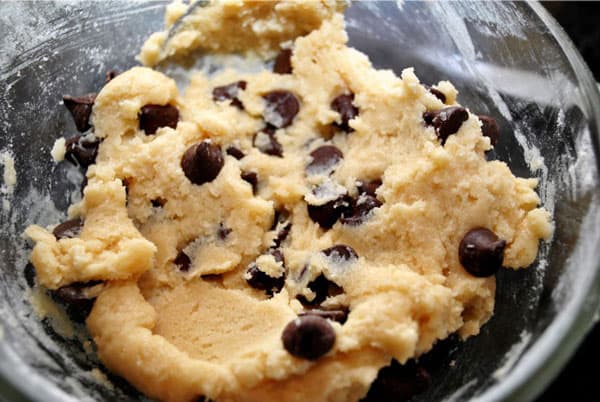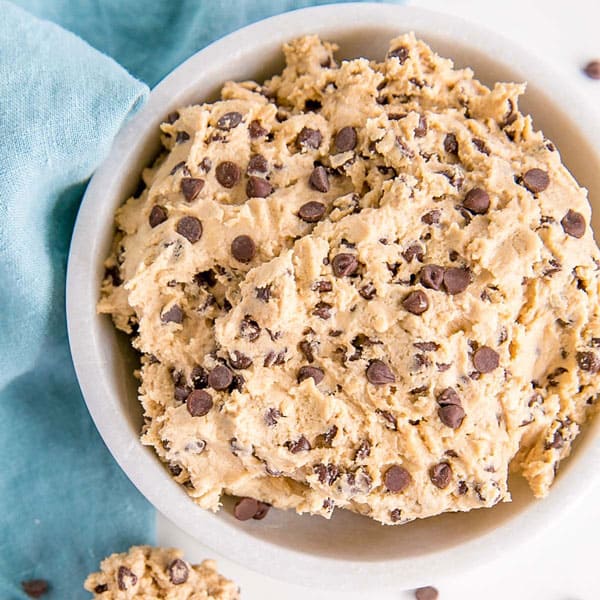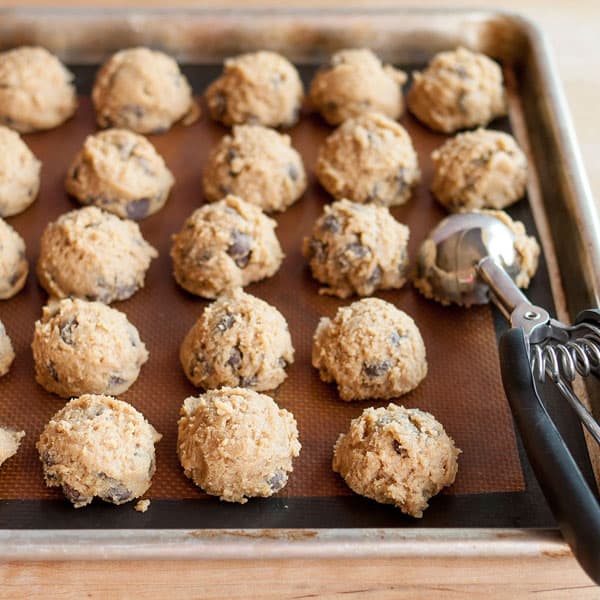Let me guess, you’re preparing for a fresh batch of cookies, or you’ve already started and now stuck with a blob of dry cookie dough. Lucky for you, you’ve reached the right corner of the internet. Today we’re going to show you how to fix dry cookie dough with the least amount of effort.
We’ve divided the article into two distinct portions. In the first part, we’ll discuss why exactly your dough is drying up in the first place—shortly followed by the latter part, where we’ll walk you through what you can do to fix that problem and bake perfect cookies every time.
What Causes Your Dough to Dry?
If your cookie dough keeps on drying up, then don’t be afraid because you’re not alone. There are a lot of bakers out there who suffer from the same problem while baking. Luckily, the reasons for this are more or less the same for everyone, and it has everything to do with moisture. Here’s a better insight on the entire thing –
Too Much Flour
If your recipe calls for too much flour or if you’ve simply used more than what’s needed, then the dough is definitely going to dry up faster than desired.
In other words, too much flour means that the proportion of dry ingredients is higher than average. As a result, you’ll notice that it has become crumbly by the time you are done with mixing the dough. The scoops will fail to form a proper ball or flatten when it goes inside the oven.
Gluten Trouble
Gluten is the protein that you get from wheat and other cereal products. This compound acts as a binding material for foodstuffs. You must be wondering what that has to do with your cookie drying up. Well, a lot.

The problem begins with over kneading the dough. When you keep on mixing it past a certain point, the dough starts to develop gluten. Although gluten is essential for holding all the components together, over mixing will form too much. As a result, the dough will harden and dry up in no time.
Fat Deficit
We know that less fat means lesser calories. While that is entirely true, a lack of fat can also cause you to end up with a dough that keeps falling apart.
Fat acts as a dough softener and binder for the ingredients. If your dough lacks fat, then you will have a hard time molding and shaping it. Not only will it dry and roughen, but it will also start to lose structure. In other words, you’ll watch your dough fall apart from the moment you try to turn it into a ball.
Liquid Deficit
Most often, your cookie is drying up due to the lack of moisture. It’s either because you didn’t put the desired amount of water/milk in it. Remember that a small quantity such as a teaspoon of flavor essence or a little bit of coconut water can make a big difference in the cookie dough’s rigidity.
Refrigeration
We use refrigerators to store food and keep it fresh for more extended periods. What it does is evaporate the moisture from the foods by continuously circulating air. It also drops the temperature below average so that bacteria activity reduces significantly.
But here’s the thing – if you refrigerate the dough before baking, then the moisture is extracted out of it. Lesser moisture eventually leads to the crumbly and dry dough in the end. By the way, you will only get dry dough from refrigeration if you’re storing it in there for too long. A simple 10-minute cooling won’t harm the dough.
How to Fix Dry Cookie Dough?

Stuck with dry dough that doesn’t mold into your preferred shape? There are countless ways to turn the table around. Here are the top 5 ways to fix your dough without having to spend hours on trial and error.
Required Equipment
- Spatula
- Milk
- Egg
- Water
- Butter/Vegetable oil
- Kneading bowl
- Baking tray
Increase Liquid Gradually
In this context, any liquid or semi-solid substance counts as a moisture additive. But you shouldn’t be adding all of your milk, water, or egg all at once.
The adding process needs to be gradual and slow to ensure a proper moistening for the dough. In other words, take a little bit of the liquid (preferably a tablespoon) every time, and knead the dough until it reaches an even consistency.
The flavors will infuse most finely, and you won’t have to worry about clumpy and dry dough anymore.
But remember that if you have to add more than half a cup of liquid, then something is wrong in the recipe. Either you have made a mistake, or the formula is somehow flawed. In such circumstances, seek help from a professional or stick with us till the end for other easy solutions.
Alter Ingredient Proportions
Adding more liquid doesn’t always solve the problem. Sometimes all it does is alter the taste of an actual cookie. Well, the solution is actually quite simple. You’ll face some issues adding more liquid when the ingredient proportions are not up to the mark.
To work around this problem, make a note of all your ingredients and check their amounts. Carefully notice whether you’re adding too many dry ingredients or not because an overkill in the dry components can turn your tender cookies into a biscuit.
If you are, then consider reducing it little by little until you reach the consistency you’re aiming for. You can also try the ‘gradual-addition’ method with the dry ingredients.
Knead with Hands
Mixing the dough with your hands is far better than mixing it with a spatula or any other tool. When you knead the dough gently with your hands, the flavor incorporates much faster. Not only does it taste better, but it also eliminates the issue of dough coagulation and unnecessary drying.

But keep in mind that over kneading can lead to gluten formation. And that can turn out to be bad for your dough consistency. So remember to knead it with your hands but don’t overdo it!
Infuse More Fat
Fats act as a binding material for your dough. When the dough lacks fat, it starts to fall apart because it doesn’t have the concrete to hold it together. When you notice your cookie dough drying and crumbling, slowly add a little bit of fat and knead it. Keep on adding fats in small amounts until it softens to a nice texture.
However, be aware of adding too much fat. Firstly, a lot of fat can cause your cookies to flatten out during baking. Secondly, too much fat is also the prime reason behind the soggy cookies that everyone hates.
Let It Rest
Lastly, letting your dough rest can essentially help you settle the dough structure. As home chefs or hobbyist bakers, we often make the mistake of rushing our baking process. Sometimes all we need is to take it slow, to stop the dough from falling into pieces.
When you let the dough sit, it starts to deform the previously formed gluten due to kneading. As a result, it gradually grows softer and tenderer when going through the settling phase. Under such circumstances, both you and your dough should get some rest before hitting the ovens.
Impress Your Guests with a Perfect Batch Every Time!
We know that perfect cookies are different for every person. But now you know how to fix dry cookie dough without having to put a lot of effort into it. So use our tutorial as a walkthrough and find out what went wrong with the last batch of cookies and fix it right away. Mending dry dough was never this easy!

